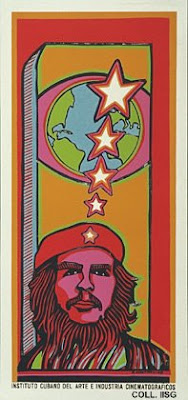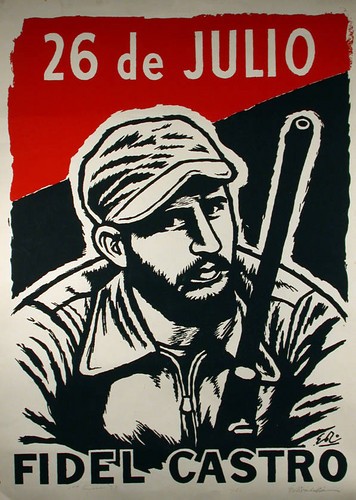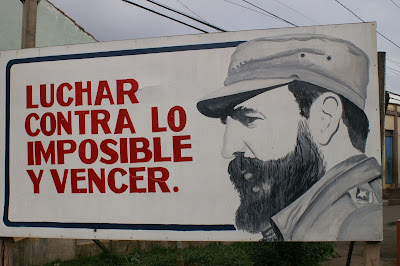In
todays session with Amber and Simon we were split into groups and had to think
of news stories from the past year that hold some relevance to us. Most of the stories were chosen because they
were interesting in some way, either because of a humorous element or because
it was shocking. Below is our list of events that caught our attention;
1. Iceland’s peaceful revolution against
their government and banks.
2. Blackberry’s network failure.
3. The London 2012 Olympics.
4. Bradley Wiggins’ Victory at the Tour de
France.
5. Felix Baumgartner’s jump from the edge
of space.
6. Mitt Romney insulting Palestinians.
7. The Barkley’s bank scandal.
8. Tom Daley’s twitter abuse.
8. Jimmy Savile’s death and subsequent
allegations.
From
this list we then had to refine our list to what we considered the most
important, we had to also consider that the story was light-hearted.
Our
top three where as followed;
1. Bradley Wiggins’ Victory
2. Tom Daley’s twitter abuse
3. The revolution in Iceland
Next
we had to give reasons as to why these stories were remembered and chosen as
the most important events from our list.
1. Wiggins’
win is inspirational as he is the first British person to win the Tour de
France.
2. It’s
shocking that someone would say the things mentioned to Daley publicly on his
twitter.
3. Iceland’s
revolution is a historic moment in time, peacefully overthrowing a government
and banking system has never been achieved before, and yet the story had no
coverage by any of the mainstream media giants.
Upon
completing the reasons we were given our next brief. It stated that tomorrow,
on Tuesday the 23rd of October we need to buy a newspaper and select
one news story that we find relevant and interesting. I will collect a number
of newspapers and select a story I believe to be important and defining at the
moment. Then I will collect a body of visual research in response to my chosen
story.
I chose a paper called the Daily Mirror, a decision I later came to regret. The paper was filled with meaningless articles and noting initially grabbed my attention. However, I came across an article on Fidel Castro, the former president of Cuba. The article can be seen below.











I chose a paper called the Daily Mirror, a decision I later came to regret. The paper was filled with meaningless articles and noting initially grabbed my attention. However, I came across an article on Fidel Castro, the former president of Cuba. The article can be seen below.
To summarise the article, rumours were spread that Castro
was on his deathbed following a string of health problems. To prove the stories
wrong Castro posed for pictures taken by his son Alex that were released to the press showing him
relaxing in his home.
| The pictures that Castro released. http://i.telegraph.co.uk/multimedia/archive/02375/castro_2375382b.jpg |
As I knew little about Fidel Castro, I started researching
who he was and found this informative short documentary.
I find Castro’s life fascinating,
going from being involved in university politics to leading a small guerrilla
army and defeating a government army. I will now collect a body of visual research
in the form of pictures and videos on Fidel Castro following his rise to power
and his time as the Cuban leader.
 |
The above picture shows a young Castro in prison for one of the first times. He was imprisoned in Mexico after being caught amassing guns that he intended to use to take back Cuba.
|
| Fidel Castro surrounded by females at Camp Columbia military headquarters.
This
picture lead me to a side to Fidel Castro that I never thought I would
discover. Through a series of articles about an upcoming documentary about Castro's life I was lead to believe that Castro has ‘bedded’
over 35,000 women at the time he was Cuban President.
|
| Fidel Castro - 1960 |
| Fidel Castro and Malcom X |
 Fidel Castro giving a speech after taking power from former President Batista. |
| http://www.findingdulcinea.com/docroot/dulcinea/fd_images/news/on-this-day/On-this-Day--Batista-Flees-Cuba-and-Castro-Takes-Power/news/0/image.jpg
I
soon learned that Fidel Castro’s plans for Cuba were morally ok, he wanted to
provide education for children and set up a national health service so that all
of Cubans could be treated for illnesses without being charged. However, I also
learned that his rise to power was plagued by violence and murder, anyone who
stood in his way were executed by his infamous firing squad. Furthermore, when
he had seized power the killing did not stop but continued, anyone who
questioned his regime or power was murdered.
|
 http://w1.1559.telia.com/~u155900388/images/che_revolution.jpg |
 Here we see the darker side to Castro's rise to power. Here he can be seen interrogating a Cuban farmer who was later executed. http://www.therealcuba.com/page5.htm  http://www.therealcuba.com/page5.htm A man stands awaiting death, Castro can be seen casually overseeing the execution. |

Castro and Che Guevara
Another
thing that I discovered about Fidel was his close relationship with Che
Guevara, also a revolutionary and guerrilla fighter who helped Castro overthrow
former Cuban President Batista. They shared a friendship until Guevara’s death.
A final letter from Guevara to Castro can be seen below.
Castro always had a rocky relationship with the USA, after taking over American owned oil refineries, in response to this an invasion took place to overthrow Castro, but it failed. Things only became more intense as the Soviet union supplied Cuba with nuclear missiles for protection. The missile crisis took place in October 1962, positioning the missiles in Cuba left America open to to nuclear attack, which was not well received. It sparked a tense thirteen day confrontation between America and Cuba which was eventually ended peacefully.
CIA pictures showing the missile base.
More CIA images documenting the arrival of the warheads in Cuba.
The crisis reached boiling point, with the Soviet union refusing to remove the missiles until America signed an agreement promising not to invade Cuba. Robert Kennedy accepted the deal, and can be seen signing it above.
Moreover, after his disagreements with America Castro was a wanted man. There were numerous assassination attempts on his life throughout his lengthy reign as Cuban President. Before he signed his presidential power to his brother there had been six hundred and thirty eight failed attempts on his life.
A website called Mental Floss listed some of the ridiculous ways the CIA attempted to kill Castro.
1. Femme fatale. Marita Lorenz, just one of many women Castro counted as a mistress, allegedly accepted a deal from the CIA in which she would feed him capsules filled with poison. She managed to get as far as smuggling the pills into his bedroom in her jar of cold cream, but the pills dissolved in the cream and she doubted her ability to force-feed Castro face lotion, and she also just chickened out. According to Lorenz, Castro somehow figured out her plan and offered her his gun. “I can’t do it, Fidel,” she told him.
2. Poisoned wetsuit. While there’s nothing suspicious about receiving random diving gear from your enemy right in the middle of the Bay of Pigs Invasion, the CIA gave it a shot. In 1975, the Senate Intelligence Committee claimed it had “concrete evidence” of a plan to offer Castro a wetsuit lined with spores and bacteria that would give him a skin disease (and maybe worse). The plan supposedly involved American lawyer James B. Donovan, who would present Castro with the suit when he went to negotiate the release of the Bay of Pigs prisoners. A 1975 AP report said the plan was abandoned “because Donovan gave Castro a different diving suit on his own initiative.”
3. Ballpoint hypodermic syringe. An ordinary-looking pen would be rigged with a hypodermic needle so fine that Castro wouldn’t notice when someone bumped into him with the pen and injected him with an extremely potent poison.
4. Exploding cigar. But this was no parlor trick – this cigar would have been packed with enough real explosives to take Fidel’s head off. In 1967, the Saturday Evening Post reported that a New York City police officer had been propositioned with the idea and hoped to carry it out during Castro’s United Nations visit in September 1960.
5. Contaminated cigar. They may have given up on the TNT stogie, but the idea of spiking his smokes was still being floated around. The CIA even went as far as to recruit a double agent who would slip Castro a cigar filled with botulin, a toxin that would kill the leader in short order. The double agent was allegedly given the cigars in February of 1961, but he apparently got cold feet.
6. Exploding conch shell. Knowing that Castro liked to scuba dive, the CIA made plans to plant an explosive device in a conch shell at his favorite spot. They plotted to make the shell brightly colored and unusual looking so it would be sure to attract Castro’s attention, drawing him close enough to kill him when the bomb inside went off.
7. Nair. Well, maybe not that brand specifically, but according to that 1975 Senate Intelligence Committee report, the U.S. believed that messing with Castro’s beard was messing with the man’s power. The CIA figured that the loss of the beard would show Cubans that Castro was weak and fallible. A half-baked scheme was hatched to use thallium salt, the chemical in depilatory products such as Nair, in Castro’s shoes or in his cigar. The chemical would be absorbed or inhaled and cause the famous facial hair to fall out. (Wait, wasn’t this an episode of Get Smart?)
8. LSD. In what was mostly an effort to discredit Fidel, not kill him, a radio station where Castro was giving a live broadcast would be bombarded with an aerosol spray containing a substance similar to LSD. When Fidel had the requisite freak out live on the air, Cubans would think he had lost his mind and stop trusting him.
9. Handkerchief teeming with deadly bacteria. The CIA was seemingly obsessed with covering Fidel in harmful bacteria and toxins, because they also considered giving him a germ-covered hankie that would make him very ill.
10. Poisoned milkshake. According to Escalante, the closest the CIA ever came to killing Castro was a deadly dessert drink in 1963. The attempt went awry when the pill stuck to the freezer where the waiter-assassin at the Havana Hilton was supposed to retrieve it. When he tried to unstick it, the capsule ripped open.
Fidel Castro and Jessie Jackson
| Castro and Earnest Hemingway |
I really like this black and white portrait photograph showing Castro in 1999
http://static.guim.co.uk/sys-images/Guardian/Pix/pictures/2010/9/10/1284118826730/Fidel-Castro-006.jpg

http://www.tumblr.com/tagged/fidel-castro?before=1350324704
http://www.tumblr.com/tagged/fidel-castro?before=1350324704
While researching I also found some Castro propaganda posters.
10th Anniversary of the Cuban Revolution 1959-1969
Next
we attended a crit that looked at our initial start to the brief. I received good
feedback on my visual research, as I had collected a good body of images and
information relevant to Castro’s life. One thing that was made clear when receiving
my feedback was the need to further my research as to why he had such a volatile
relationship with the western world. Moreover, I also needed to research as to why
rumours of his death have been fabricated? Finally, once I have researched the above I
will collect further research in to political posters used in Castro’s regime.
Castro Mural painting.
Another one of Castro's political posters designed by R. Martinez. 1968.
Another design by R. Martinez, that shows Che Guevara. 1968.
This poster is also designed by R. Martinez and shows an image of Camilo Cienfuegos, a famous rebel fighter associated with Che Guevara and Fidel Castro.
The next poster was used around the start of the Cuban
Revolution, and shows an image of a young Fidel Castro. The background is red
and black, colours which are often associated with the revolutionary movement.
This poster is an example of the politically
influenced posters Castro released. The English translation of the text reads ‘Free
Thinking Batista Flees’. Batista was the former president that Castro
overthrew, the poster sends a clear message to the people that Batista is gone, which seems to be greatly celebrated.
Additionally, the poster also shows crowds of cheering people supporting Castro
and his affiliates.
This poster shows Fidel
Castro and is apparently one of the few posters with his image. According to the website where I sourced the
image ‘There is reportedly a law in Cuba that prohibits making posters with
images of the politicians that are still in the office.’ due to this Che Guevara
was often used instead. However, I need to further research into this claim as I
have found both posters and murals that use Castro’s image.


















No comments:
Post a Comment